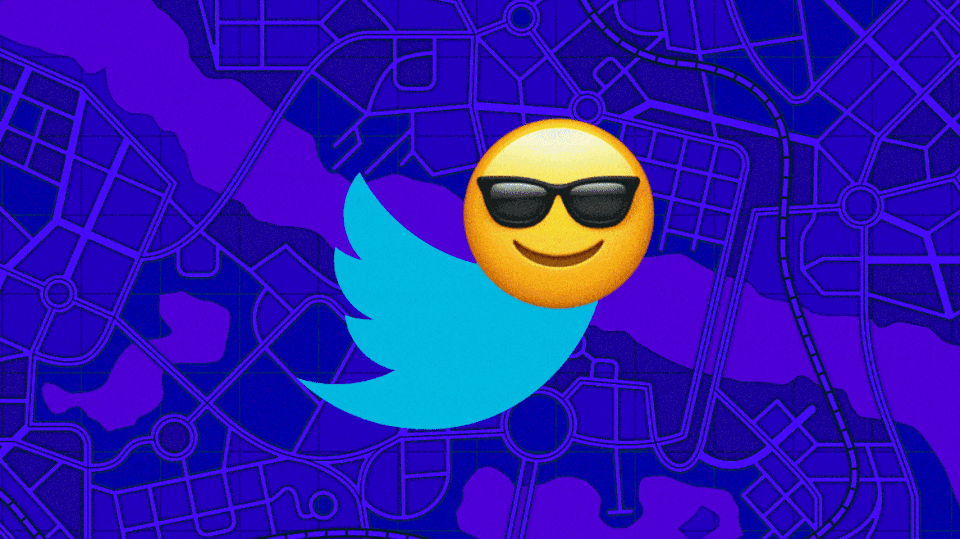All of Our Tweets Could Help Us Design Better Future Cities

If you’re terminally online, you know the feeling well: the urge to tweet out every little thought you have no matter how dumb or inane. See something weird on the subway? Tweet about it. Go to the dentist? Tweet about it. Checked out a new museum? Tweet about it.
As it turns out, those tweets actually help clue scientists in to how specific places in cities bring out certain emotions in us. A study published on Feb. 1 in the journal PLOS ONE took a look at 2 million tweets in San Francisco and London and found that certain locations and events elicited specific emotions in people. The researchers believe that this kind of analysis can go a long way for how cities plan for future developments.
“At the most basic level, data such as the one we collected can be used to help pinpoint which areas within the city tend to cause negative/ positive emotions and provide feedback to city planners such as what effect adding public spaces (e.g. parks) to a specific area might have,” Panote Siriaraya, an information and human sciences researcher at the Kyoto Institute of Technology in Japan and co-author of the study, said in an email to The Daily Beast.
How a Computer System Learned to Read Human Emotions
Siriaraya added that the analysis could help train navigation apps and software in order to “help tourists find routes with more visual diversity or ones that are more frequented by locals, or to help people with addiction find routes which help them avoid facilities with alcohol.”
The team first collected a year’s worth of geo-tagged tweets from each city and used AI-powered tools to categorize each post with a different emotion. Then they created a list of locations within the cities and assigned a “zone of influence” for each one.
Each tweet and its corresponding emotion was then placed on a map with the locations. If the post was made within the zone of influence, it was associated with that location. Finally, they tallied up the tweets and emotions that were in that location’s zone.
Could a Heart Medication Stop Violent Crimes From Happening?
“Joy tended to be matched to locations such as swimming pools and motels,” Siriaraya said. He added that the team also looked at the types of locations that were around each tweet but not necessarily in its zone of influence to see if there was a pattern. “Tweets which exhibited more joy tended to have more hotels and sports and entertainment venues within the vicinity.”
Outside of specific locations, the study’s authors also found differences in emotions throughout the week—as well as when different events occurred. For example, they found that people’s anticipation rose steadily throughout the week as folks are no doubt excited for the weekend and was the lowest on Sundays.
They also found that events such as the 2017 Women’s March elicited emotions such as anger and disgust in San Francisco. Meanwhile, London users exhibited more fear and sadness during terrorism attacks that occurred there. Naturally, the highest levels of joy and elation occurred during New Year’s Eve for each city.
Elon Musk Whinges After Report Twitter Caved to India’s Censorship Pressure
The team plans to build off of their findings. Siriaraya said that they hope to create a sort of “historic digital archive for human emotion.” This would be a reference tool that goes beyond traditional news and historic archives, letting future people know what exactly you were feeling on a specific day or event.
“Maybe we can use this tool to help us look back decades later and learn something like ‘People were pretty happy/angry after day X in 2021 in this city or at a particular location type,’” Siriaraya explained. “This type of data might also help us understand and answer more specific questions about human emotions such as ‘After a natural disaster, what type of locations are good at reducing the negative mental effects from such disasters.’”
So, your tweets might actually be much more than silly shit posts and memes. They could give future historians a look into our emotions. They probably have their work cut out for them with dril tweets though.
Got a tip? Send it to The Daily Beast here
Get the Daily Beast's biggest scoops and scandals delivered right to your inbox. Sign up now.
Stay informed and gain unlimited access to the Daily Beast's unmatched reporting. Subscribe now.

 Yahoo Movies
Yahoo Movies 